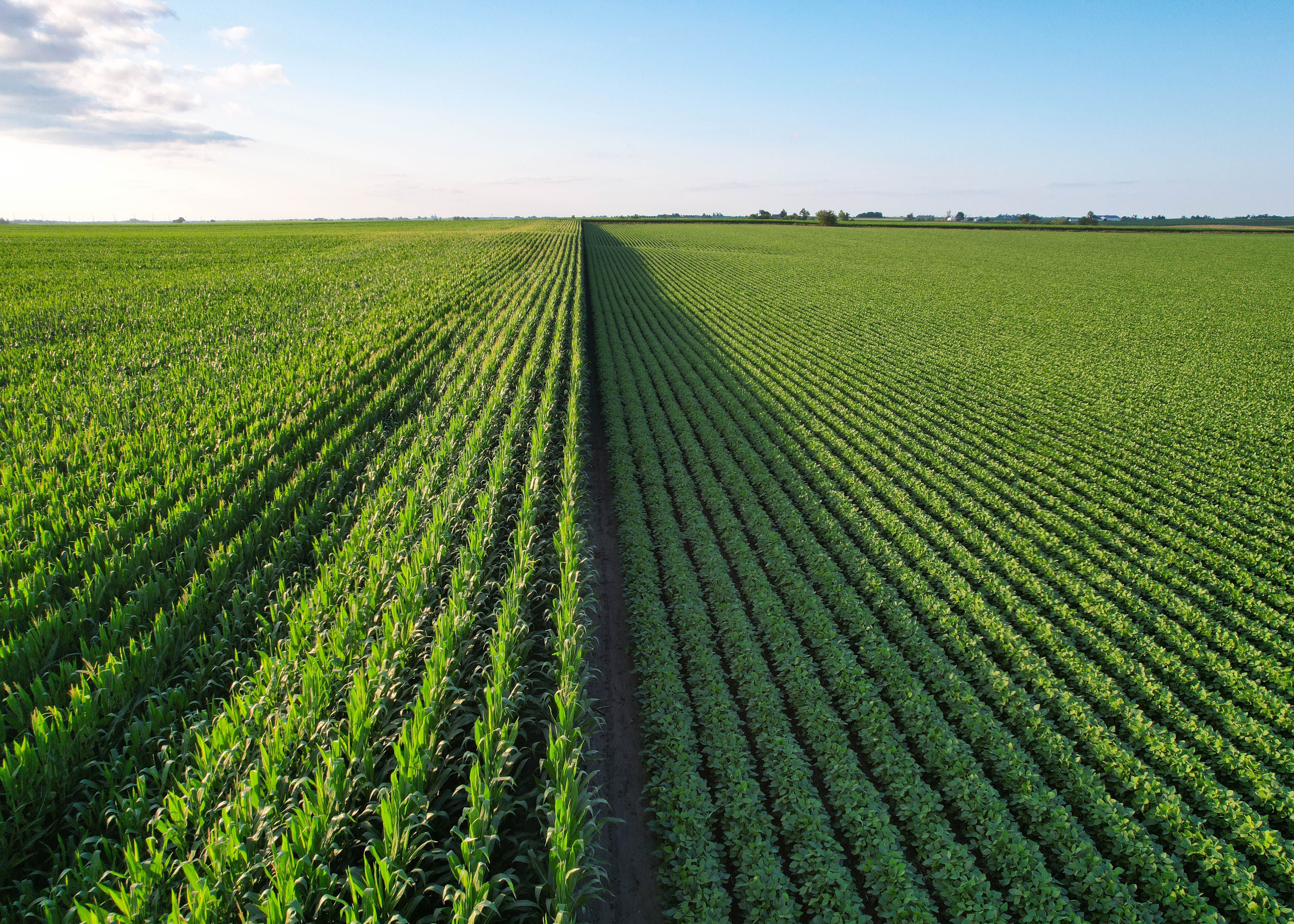
(Photo: Iowa Soybean Association / Joclyn Bushman)
USDA report boosts planted acre estimates
July 3, 2024 | Kriss Nelson
Have U.S. crop farmers planted 177.6 million acres to corn and soybeans? The U.S. Department of Agriculture (USDA) thinks so.
The USDA released its 2024 Acreage report last week, adding 1.9 million principal acres to the initial acreage posted in the March Prospective Plantings report.
“This is a big number. The June acreage report is one of the biggest reports of the year, and they do not revisit these acreage numbers until August,” says Nick Repke, grain marketing advisor for Kluis Commodity Advisors.
Repke says most of the additional acres were given to corn.
“Corn acres came out surprisingly high at 91.47 million acres,” he says. “This is an increase of almost 1.5 million acres over March’s Prospective Plantings report. That is quite a bit more than what trade was expecting. Obviously, this is bearish for corn in the near term.”
USDA is estimating Iowa farmers planted 13.1 million acres of corn. This is unchanged from 2023, but 300,000 acres above the March intentions.
Repke says the post-report trade has been muted in corn which can most likely be attributed to the lighter volume of holiday trade and is currently holding the lows from June 28.
“Technically speaking, that is positive,” he says. “Going forward, we are watching weather as pollination takes place later this month.”
Soybean acreage was slightly reduced from the March estimate of 86.51 million acres to 86.1 million acres. In Iowa, soybean planted acreage is estimated at 9.90 million acres, down 50,000 acres planted in 2023 and down 300,000 acres from the March estimates.
“This is a good report for soybean farmers,” says Repke. “That drop in acres tightens up some of the supply issues we are facing later this year. I think this report is slightly bullish for soybeans.”
The soybean market responded with a three-day rally taking soybean prices up to a two-week high.
August soybean prices reached $11.55 per bushel on report day, June 28, but closed at $11.33 per bushel. As of mid-day Wednesday, July 3, August soybean prices hit a high of $11.62 per bushel.
“August weather will decide what yield numbers will look like this fall and reports later this month will move the market,” says Repke. “Many soybeans in the northern and western Corn Belt are behind for this time of year which could lead to production issues.”
Wheat acres were below expectations and slightly below the March report of 47.49 million acres, down at 47.2 million acres.
Repke says another surprise was an increase in cotton acres at 11.67 million acres, which is one million more than USDA projection of 10.67 million acres.
Where did those additional corn acres come from?
The USDA is reporting most of those additional acres for corn came from the Western Corn Belt including 2% more planted in South Dakota and Nebraska, 2.5% more acres planted in Minnesota and 2.3% more acres planted in Iowa over the March Prospective Plantings report.
“I struggle with these numbers,” says Repke. “Common sense tells us spring planting did not go well. If you look at what we know, the reality is for farmers, versus what USDA is telling us, I think USDA cut too many principal acres in March’s report. Even with the cold, wet spring and planting delays, farmers were able, according to the USDA, to get in the field and plant more than they had expected. That is the best guess as far as an analyst I can come with.”
From now on, Repke says these are the acres that will be considered, and we wait until next week for the July 12 World Agricultural Supply and Demand Estimates (WASDE) report.
“I assume the USDA will make adjustments to corn yields, especially with the higher number of corn acres,” he says. “Historically, adjustments to soybean yields won’t be drastically changed for at least another month.
Current market influencers
For the rest of the growing season, Repke says the market will continue to play close attention to USDA’s weekly Crop Progress and Condition report and what that says about crop conditions.
“Those Monday reports are important, and that is what we will keep watching. Weather will be the biggest driver,” he says. “I am telling farmers to be watching forecasts and make some of their marketing adjustments on what the weather is going to do for yields. Because of the wet weather in the northwest Corn Belt, the harvested acres could be smaller than normal.”
The Iowa Crop Progress and Conditions report shows 61% of the state’s expected soybean crop has been planted, which is a week behind last year and two days behind the normal. Seventy-eight percent of Iowa’s expected corn crop has been planted which is eight days behind last year and four days behind the five-year average.
Macro market factors
Here are the top three macro factors Repke is watching:
1. The value of the U.S. dollar
“The dollar is currently trading at high levels. If we see some weakness in the dollar, it will help out our exports,” he says.
2. South America
“Later this year, we will be keeping an eye on planted acres in South America and the affect it will have on the price of soybeans going into winter,” says Repke.
3. Demand
“Where does China stand when it comes to exports? Are they still a big buyer of U.S. soybeans? We will watch them and how that affects prices going forward,” he says.
Back